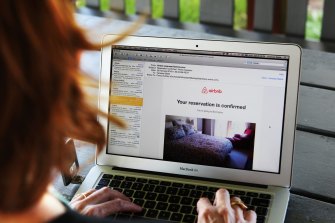
Tracking work time on the computer
Clocking you in and out may be the most basic function, logging your hours worked, times idle and other gaps in the workday. Employers say it can help identify overwork or burnout if employees are spending too much time at their desks.
Conversely, a time-tracking system may prompt you when your computer has been inactive for a period, and if you don’t respond, it will automatically log you off, which could affect your pay at some companies.
Logging keystrokes
Also called keylogging, this tool can let administrators know not only how many keystrokes are typed, but everything that’s actually typed, even deleted letters and words.
Covert keylogging is one way hackers can gain access to passwords and other personal information. For bosses, snooping on every keystroke an employee performs can get pretty boring pretty fast, but it may be useful in detecting those who spend a lot of time chatting and not doing work.
Monitoring websites, apps and emails
Are you looking at websites that have nothing to do with work? Do you have a game running in the background or are you actually playing it? How much time are you spending on social media?
Monitoring internet activity is a common feature of most monitoring software, although there are varying degrees of access that an employer may have. Some may be interested only in knowing how much time you spent on instant messaging; others may want to know what you were talking about.
Grabbing screenshots from the computer
It’s a standard feature: capturing snapshots of what users have up on their screens at any moment or at set intervals. Managers can even create a slideshow that provides a summary of an employee’s workday in images.

The online travel accommodation site has revolutionised how people travel.Credit:Peter Braig
Some employers, such as Boost Media in California, allow users to delete a screenshot before bosses can see it.
Loading
“We realise that mistakes can be made. It’s easy to forget that you’re logged in and check your personal bank account,” says Jeff Pulvino, Boost Media’s chief executive.
Activating webcams
This may be the most invasive way of keeping tabs on workers, whether viewed live or by recording video or sounds.
Electronic Frontier Foundation found that only two of the 10 programs it reviewed offered this feature. And some monitoring software suppliers say it’s a step too far.
“Especially with people working from home with their children and their families, employers don’t need to be staring at you or your home,” says Elizabeth Harz, InterGuard’s chief executive.
Los Angeles Times
The Business Briefing newsletter delivers major stories, exclusive coverage and expert opinion. Sign up to get it every weekday morning.



























